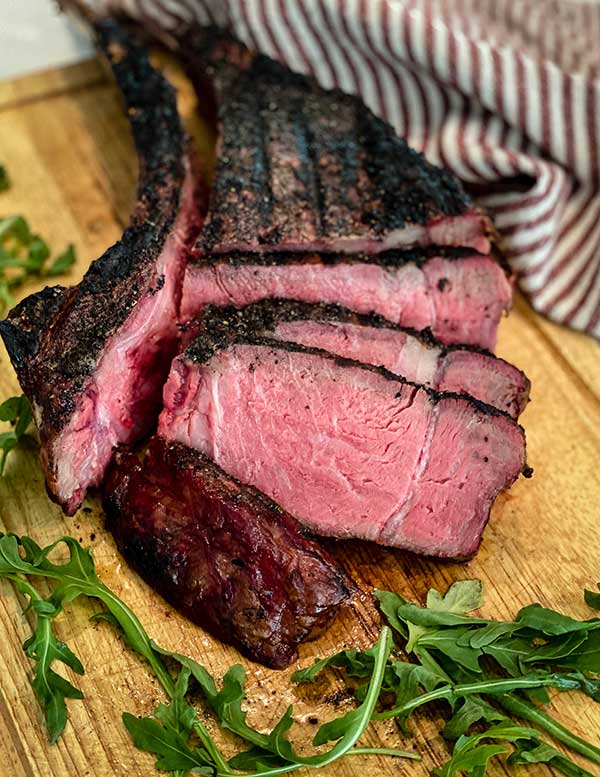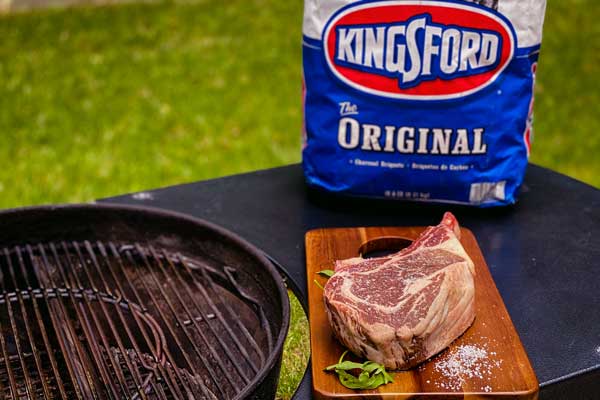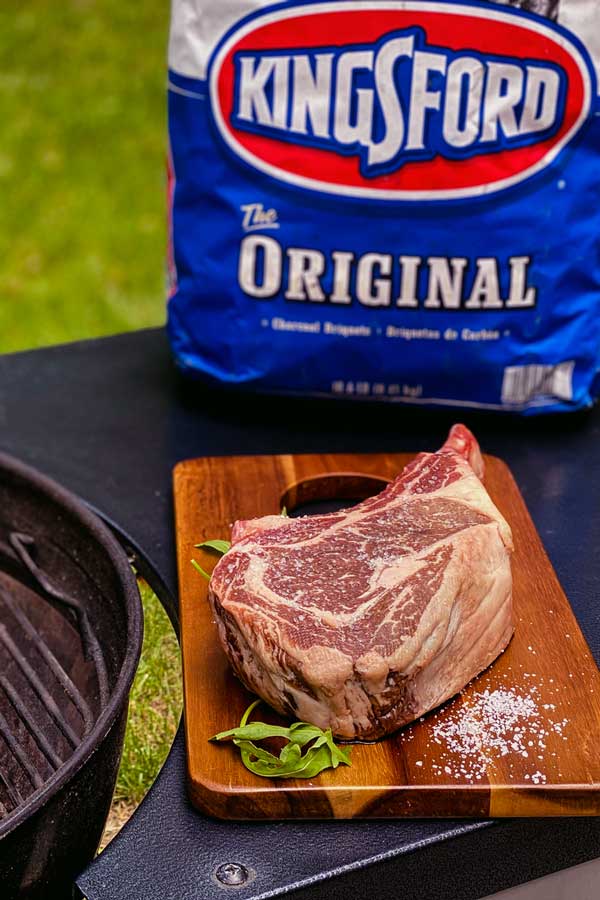This post is sponsored by Kingsford but the content and opinions expressed here are my own.
Are you trying to perfect your steak game and get that beautiful char that can only be found at a steakhouse? I’ll make this promise to you: by following my step-by-step process below you’ll not only achieve a better-than-steakhouse-quality crust but that light smoky flavor that makes a steak really come alive. To be fair, the Kingsford briquettes do the work on this, but I help out when I can.
The outside crust of a steak has incredible flavor and is developed by searing food through what is known as the Maillard reaction. Many people start cooking a steak by searing it first and then finishing the steak using indirect heat. I couldn’t disagree more with that technique for a thick cut of meat. Searing first “to lock in the juices” is a fairy tale that’s been passed down for generations. Doing so can leave you with overcooked gray edges on your steak and an undercooked raw middle. By doing a reverse sear, (searing at the end of the cook, you’ll end up with even, edge-to-edge doneness throughout your steak. The ever so slight crunch from the crust, the center of the steak melting in your mouth—it’s perfection.
Once you mic drop after pulling off the perfect reverse sear, take the steak to the next level with some homemade herb butter. Give it a try, I promise you’ll be hooked!
Step-by-Step
Step 1: Remove steaks from the refrigerator and let them come up to room temperature. This will take about an hour. Season with salt, or your favorite rub, about 20 minutes before placing them on the grill.
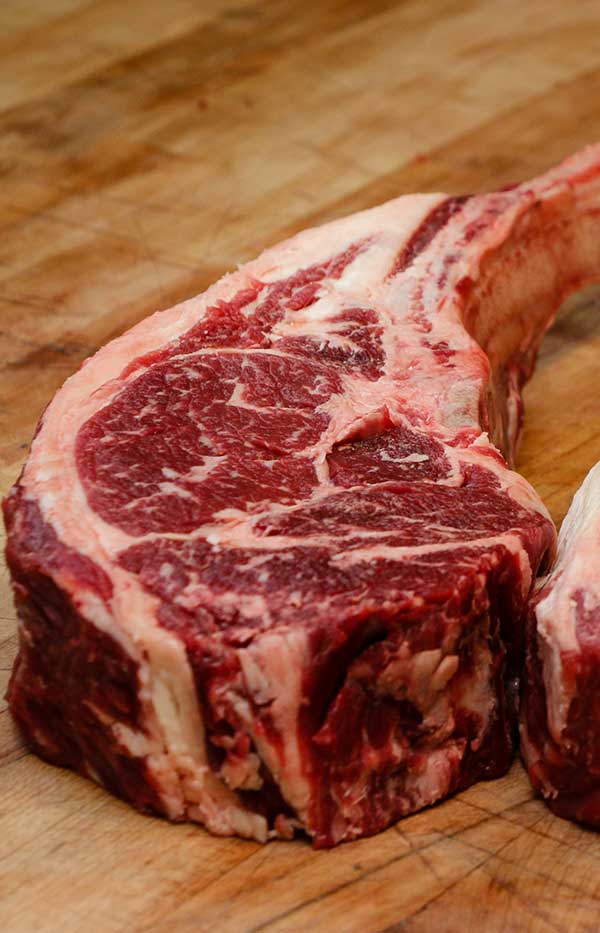
Step 2: Build a pile of Kingsford briquettes on one side of your grill, piling it high but leaving ¾ of your grill void of any charcoal. Add 12–15 briquettes to your chimney and light them. Once the coals are white-hot, pour them into one side of the unlit pile of briquettes. This will allow for a nice slow burn by adjusting your grill’s vents to maintain the grill at 225-degrees Fahrenheit.
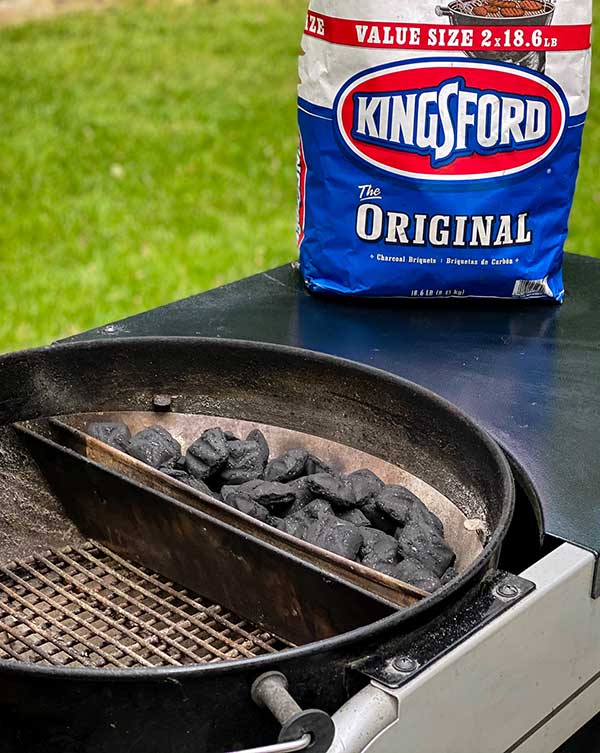
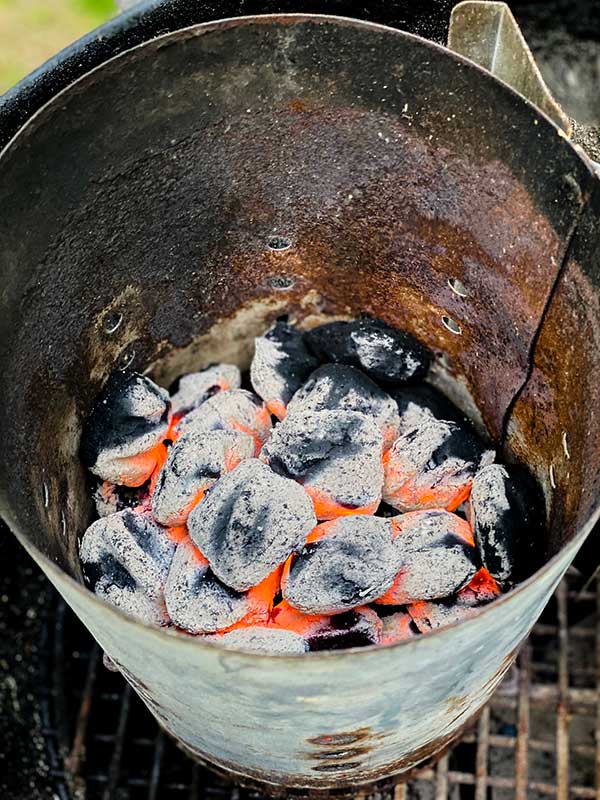
Step 3: Insert a reliable meat thermometer into steak and place in the indirect heat zone of the grill. If your steak is bone-in, ensure the bone is towards the heat source. This will help protect your meat. If you’re cooking a T-bone or Porterhouse, ensure the strip side of the steak is facing the heat source. The filet side is much leaner and will cook faster, so you want it as far from the briquettes as possible. Place the lid on the grill and allow steaks to cook until they reach an internal temperature of 125-degrees Fahrenheit. During this slow cooking process over indirect heat, your steak will take on that charcoal flavor that just can’t be duplicated from a steakhouse broiler.
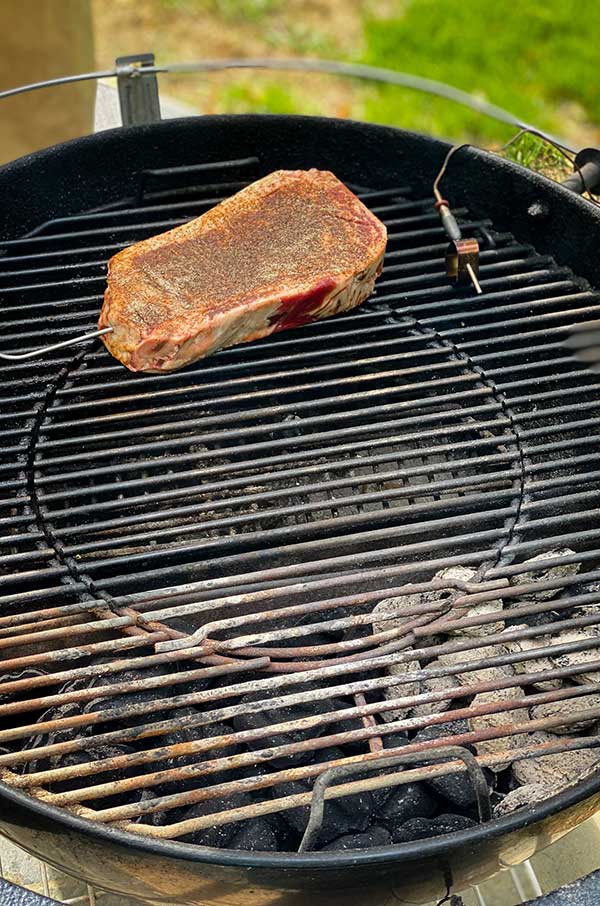
NOTE: 125°F is for a medium-rare finished steak. If you like your steak more done, take it to 130°F or even 135°F before removing it from the grill.
Step 4: Once steaks have reached the desired internal temperature, remove them from the grill, and allow them to rest under foil while you prepare your Kingsford briquettes for searing.
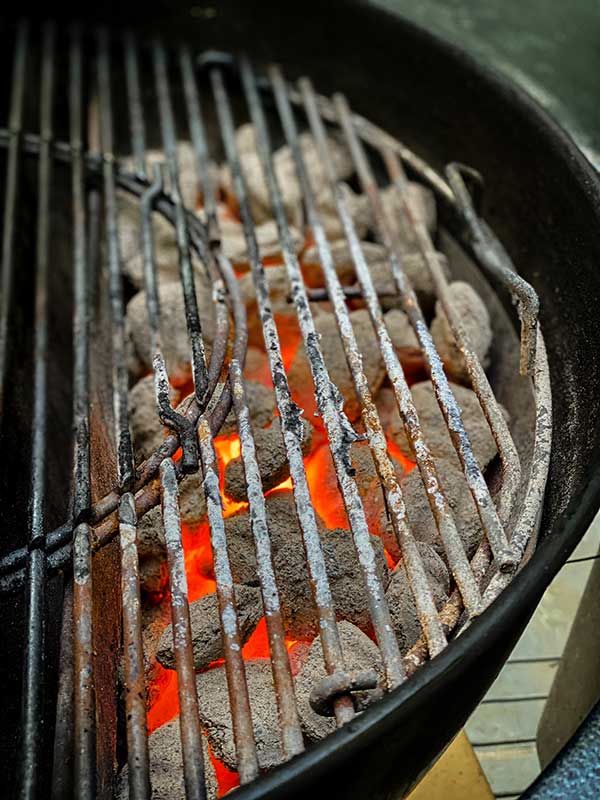
Step 5: Using heat resistant gloves and tongs, pile the coals as high as possible in order to get the heat source as close to the grates as possible. Leaving the lid off your grill after this is done for 5 minutes or so will allow enough airflow to get the briquettes at their maximum temperature, perfect for searing.
Step 6: Once coals are glowing hot, place steak directly over them to sear the outside. Sear a thick steak for about 3-5 minutes total flipping constantly (every 15-30 seconds). This will give your steak a better-than-steakhouse overall quality sear. Sure, grill marks look cool, but if you’re looking for the very best flavor you want that nice char all over the steak—not just on a grill mark. After the searing is complete your internal steak temp should be about 130-degrees Fahrenheit for a medium-rare steak and the meat should be an even caramel brown color.
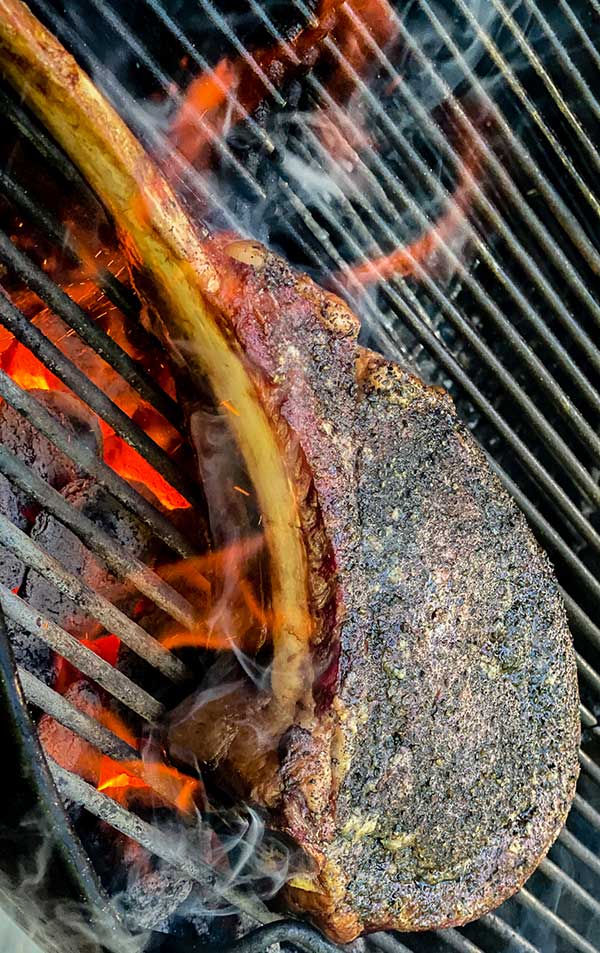
Step 7: When your steak hits the desired temp, remove from the grill and allow it to rest for at least 5 minutes before slicing.
Resting the meat (letting it sit at room temp) is important because the moisture inside needs time to redistribute back through the meat. If you cut into your steak too soon, the liquid will run out and your expensive and perfectly cooked steak will end up as dry as an old catcher’s mitt.
